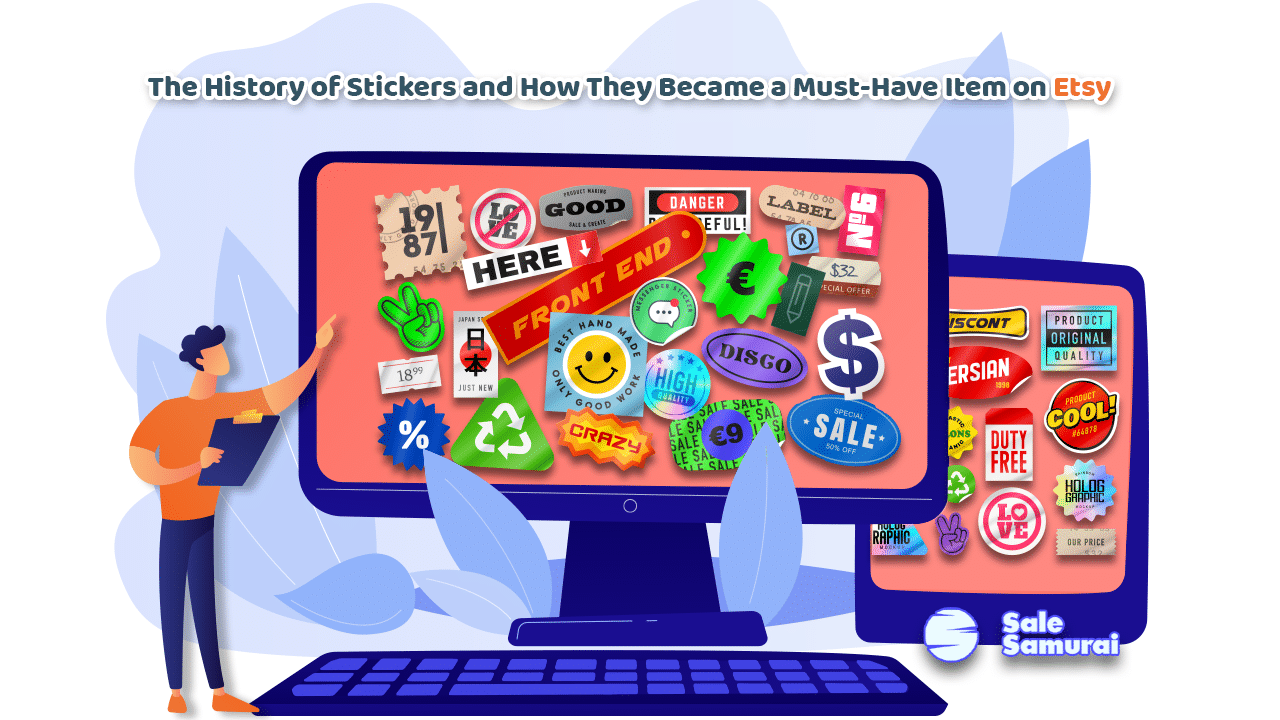
In our continuing look into the sticker craze and how you can profit well from it, it might be important to know that this is really not a new concept. But just how far back does the idea of creating things and sticking them on other things go? Well, it seems that stickers have existed for literally thousands of years. So let’s take a little journey into the development of the common sticker, from its origins in early societies through the 19th and 20th centuries and into the sticker art frenzy of today.
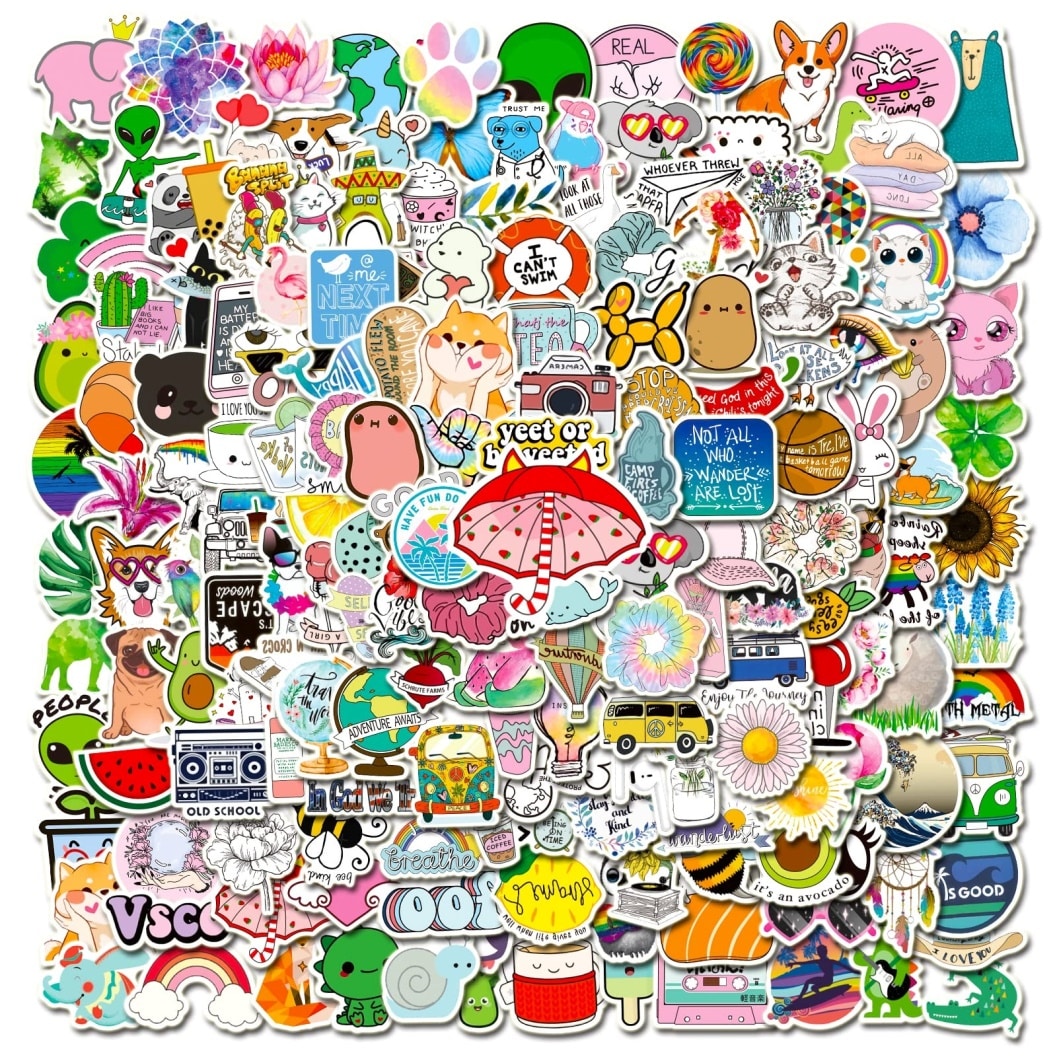
STICKER LIKE AN EGYPTIAN
It might seem a bit of a stretch to say that stickers have been with us since early history, but there seems to be proof of this. Remains of adhesives used on papyrus in ancient civilizations have been discovered by archaeologists. In the past, individuals made DIY posters to be pasted on walls by writing on whatever was available and using adhesives like beeswax and tree sap. It would seem creating at home and bringing art to other places to be displayed was an early art form when certain technologies were developed.
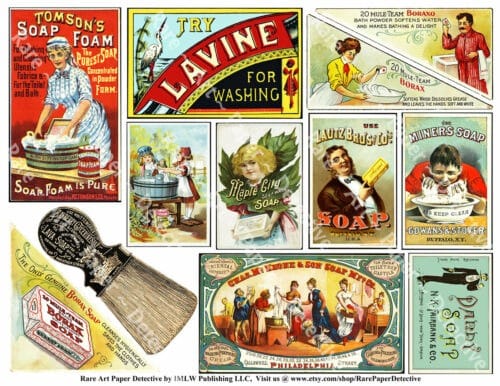
We even see this application (forgive the pun) today in everyday life. We might not have to lick stamps anymore, but we all still use them for regular mail correspondence. The postal stamp, which initially cost one penny in the UK, revolutionized the sticker concept in 1840. Its development overhauled their postal system and popularized what was called the “Penny Black” stamp. This postage stamp had an adhesive backing that became active when moistened when it was time to attach it, much in the same way traditional stamps are used to this very day.
THE ORIGIN OF THE “DECAL”
But even before that, we can see its modern origins. In the 1700s, objects and documents were being stamped with revenue and tax stamps using glue paste. Décalquer, a method developed by French artist Simon Ravenet, included pressing tissue paper between colored copper plates before transferring the patterns on the paper to porcelain or ceramic surfaces. This is how the term “decal” came to be used, and just about everyone uses this term to describe such things today. If you’ve ever built a model airplane, you know this concept quite well.
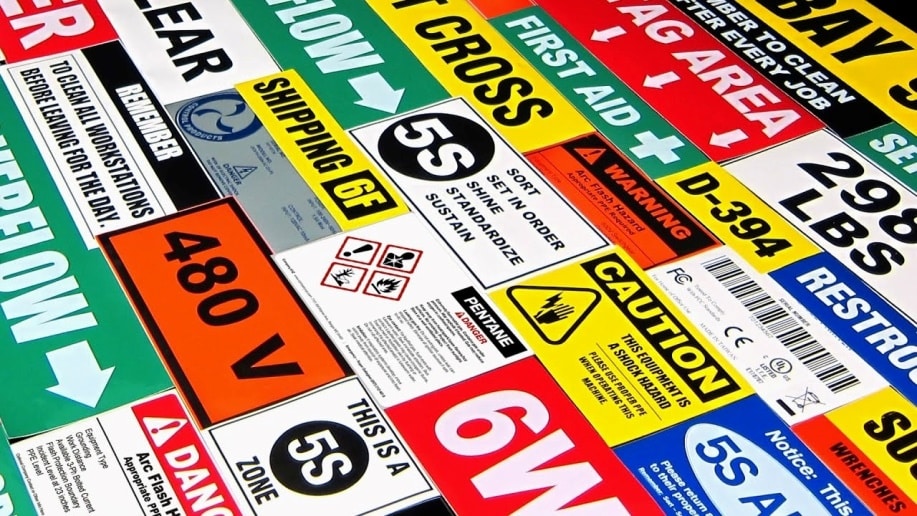
LITHOGRAPHY AND THE EXPLOSION OF ADVERTISING LABELS
The advent of lithography and the printing methods associated with it was already in use by the late 19th century. Lithographic printing was considerably simpler, more affordable, and could print in a wide range of colors. Everyone who had anything to sell could now create original adverts for their goods much more easily as a result. Making these adverts adhere to the surfaces of boxes and products that would be shipped over great distances (while being exposed to various temperatures) before being sold was still a considerable challenge, however. Farmers and manufacturers also needed a reliable method to quickly identify products in boxes and prevent labels from peeling off packages in varying temperatures when refrigerated train cars were introduced for moving food and produce across continents and boundaries. As a result, lithographic labels with gummy adhesive were added, and these labels started to appear on fruit crates, soap boxes, medicine bottles, and packages of cigars and cigarettes. It was the one simple answer to everything.
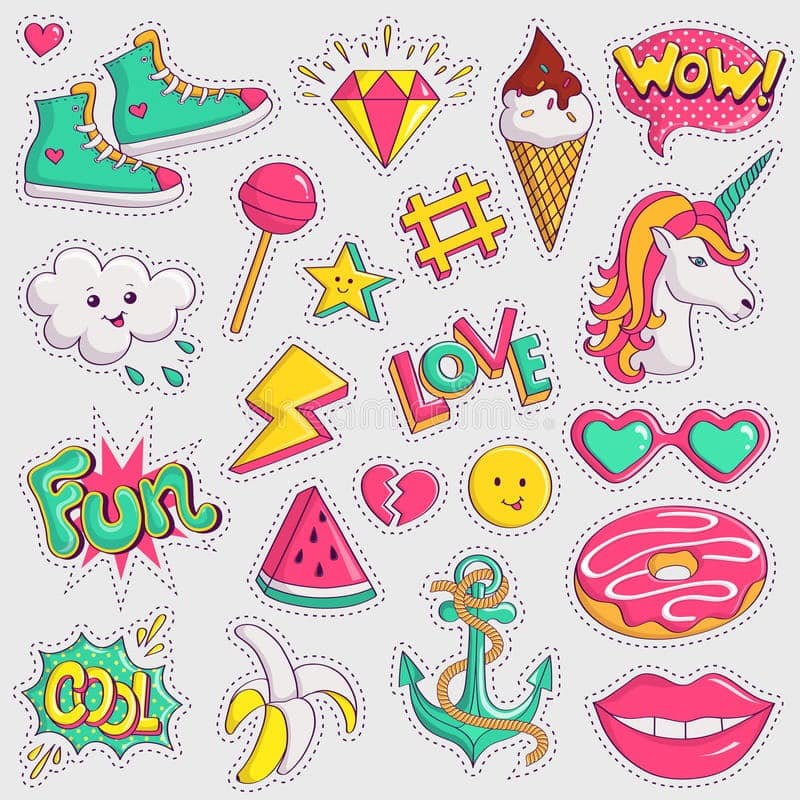
THE “FATHER OF MODERN STICKERS”
The pressure-sensitive device that made self-adhesive labels with peel-off backings that could be die-cut into any size or shape was invented in 1935 by American inventor R. Stanton Avery, also known as the “father of modern stickers”, by combining machine parts, a saber saw, and a variety of printing materials. This was the true beginning of the “sticker” as we know it today. A close to century-old process, more popular and commonplace today as ever before.
BUMPER STICKERS AND “STICKERMANIA”
Uses for these items did change as consumers also wanted them and not just for business and manufacturing issues. Once the ease of use of self-adhesive stickers was shown, it greatly increased their appeal. Self-adhesive labels and specialized pigments were coupled by later developers in the 1940s to create an alternative to the pervasive, opinionated “bumper signs” that people used to tie to car bumpers with pieces of rope. By the 1960s, bumper stickers could be found on cars across all of North America’s main highways. Once they were seen in use, people began to realize that bumper stickers may be both entertaining and educational and might explain their subsequent popularity. During the 1960s, stickers could be found in candy boxes, trading card packs, and souvenir shops all over the world.
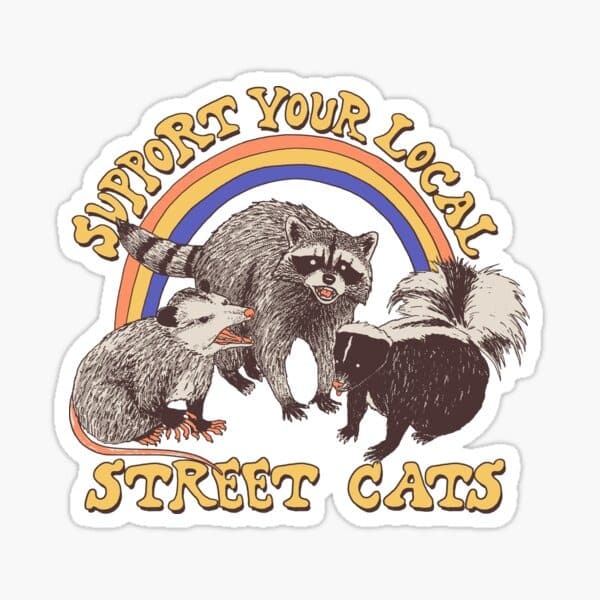
“Stickermania” may have reached its peak in the 1990’s, but their popularity is growing again today. Stickers now have perforations, can be smelly, furry, scaly, puffy, or glow in the dark. For the marketing of TV shows, musicians, movies, and toys, stickers are still widely used. Many people keep collections of stickers in books unused, while others apply them to everything from clothing to baggage to buildings to laptops. Popular sticker art developed as a result of artists creating stickers and sticking them on walls and underpasses in larger cities, turning public spaces into galleries of a sort.
THE MODERN STICKER/LABEL MARKET
In the 2020’s, stickers are indeed still lucrative as a business. It is sometimes estimated that the global label market can reach over $40B dollars in good years. Due to the simplicity of e-commerce and technology, many companies choose to buy stickers from specialized printers rather than making them themselves. And many of those printers are set up to do exactly that one service and profit from it consistently.
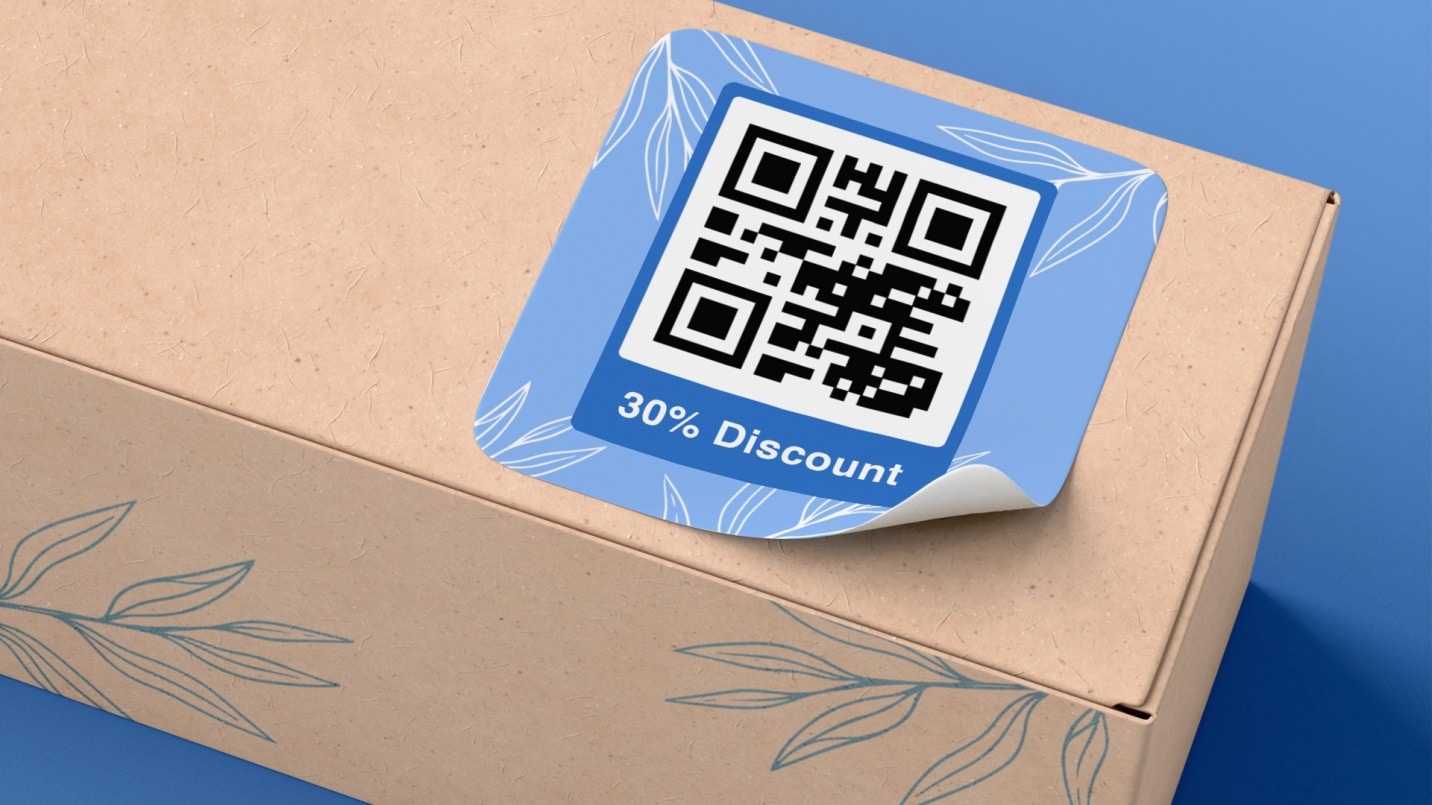
Back to industrial uses, retailers are able to sell and organize consumer items more easily thanks to barcode stickers. These changed in some places into QR code stickers that can now be scanned with smartphones and used with augmented reality without any issues. Smart labels, also known as RFID labels, which employ electromagnetic fields and radio frequencies to store and transport data quickly, are now being tested by researchers. Checkouts may become obsolete as a result of RFID tags’ ability to track every item in a store.
What lies ahead for this industry? What does the future of stickers look like? Will there be eco-friendly forms that reduce waste? We hope so. Will stickers and technology continue to be combined in amazing and practical ways? That seems quite likely.





